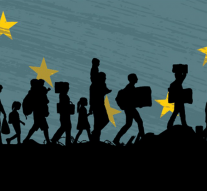
The European Semester and migration
Migration 20 May 2019Many of you could, or could not, already heard about The European Semester.
According to this long but thorough definition by the EASPD, a non-profit NGO in the disability sector, “The European Semester (ES) is a multi-annual exchange/discussion between the European Commission and Member States to achieve the EU’s targets, both in terms of the Europe 2020 Strategy and of the Stability and Growth Pact. Each year, the European Commission (EC) analyses in detail EU Member States’ economic and structural reforms programs and provides them with a set of recommendations for the following 12-18 months. During this time, EU Member States have to align their budgetary and economic policies with the objectives and rules agreed at EU level, within the targets previously mentioned”.
The European Semester process is based on three key documents which are published each year:
- The Annual Growth Survey (AGS): priorities for action at the national and EU levels.
- The National Reform Programs (NRPs): how EU 2020 Strategy targets are being reached, and which national policies will be implemented.
- The Country-Specific Recommendations (CSRs), actions for each member state to take, according to its economic and social performance during the previous.
The CSRs are based on Country reports, which assess each government’s implementation of the previous years”[1].
Why it is important? Because, still according to EASPD words, “The European Semester influences legislation at national level in the field of public expenditure, employment, education and social care”.
What about migration? It doesn’t face migration. Even if migration is strictly related with the way you face social matters, it is not mentioned.
For example, here, you can find every country report for each member. If we open the Italian one, we can see migration is named just three times regarding the progressive ageing of Italy’s population and the consequences related to the Italian labor market and retiring system, stressed by this ageing process.
Migrants are people moving from A to B, most of the time because they must. Considering them before as a social issue and only then as an economic one, could give us a more comprehensive approach helpful to deal with a phenomenon that is huge, massive, unstoppable and, first of all, set in motion by a humanitarian matter, bringing also opportunities for migrants and for the societies welcoming them.
To face it in this way we should before implement migration policies taking into account quality and quantity of migration flows, helping them to quick from black labor market, so they will be able to give their own contribute to welcoming countries’ economies.


